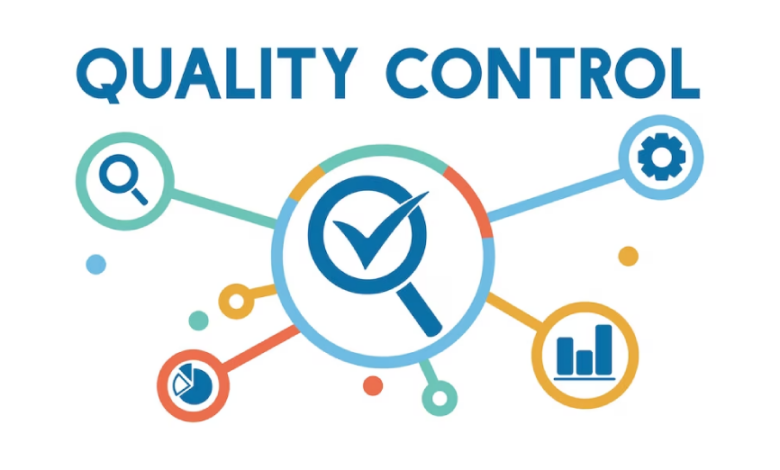Quality Control: Balancing Cost and Standards

No matter the size, every company deals with quality control. It’s a tricky area; the cost can battle against quality, puzzling many businesses. This blog unpacks this challenge, revealing the delicate dance between price and quality in the services.
Recognizing the Significance of Quality Control Services
In the high-pressure business world, Quality Control Services are top dogs. They’re key in maintaining a brand’s image of high standards, something essential to draw in and keep loyal customers. These services lay down strict rules, helping businesses hit a triple win – reducing risk, minimizing mistakes, and improving efficiency.
Think about an orchestra without a leading conductor – total chaos, right? In a similar way, without strong quality control, businesses can spiral into disorganization. These services are the conductor, bringing harmony to products and services so they hit the right notes, meeting the set standards. The importance? Bigger than you’d guess. Lower quality can lead to big trouble, from loss of customer confidence to potential legal issues.
In simple terms, Quality Control Services are not just a good extra or a superficial nod to standards. They’re like a safety life vest for companies in rocky seas. They offer a guard against possible errors and their fallout. While it may seem tough to grasp the key role of Quality Control Services, keep this in mind – in the business scene where quality equals survival, these services are your lifesaver. In the strategic game of business, think of Quality Control Services as your Queen, shielding your King (your brand’s image) from being cornered.
Decoding the Price Aspects of Quality Assurance
There’s a common notion that ‘quality means causing a dent in your pocket,’ but that’s not universally true. Having a comprehensive quality control plan calls for financial input. Costs include attaining skilled staff, delivering robust training, investing in top-tier equipment, and adopting breakthrough technology.
Yes, these costs can appear high at first. But, compared to potential monetary complications from poor quality, they lessen. Imagine launching a low-quality product. You face product returns, falling sales, a damaged brand image, and possible lawsuits.
The hidden fees from bad quality can seriously outdo investing initial capital for a solid quality control plan. Hence, putting money into quality control compares to buying business insurance. It’s a shield against disastrous events that can rock your business to its core.
We shouldn’t see quality control as an unnecessary cost, but as a crucial contribution. It strengthens your brand against potential dangers, promotes customer happiness, trust, and eventually, ongoing profits. Yes, the charge for instituting effective quality control may seem inflated, but the expense of ignoring it could be catastrophic. Choose wisely. It’s a crucial and silent move towards securing your position in the highly competitive business world.
Quality Control – A Two-Sided Coin
Quality Control has two sides. One side helps a lot. It makes sure products are good. It cuts down on errors. It helps a company’s name. This makes people trust them more. It makes them a tough competitor.
But there’s another side. If Quality Control is too strict, there are problems. One is many reject products. This causes waste and cost increase. This is bad for companies with little money or tight profit margins.
The second problem can slow the making of products. Checking a lot can sometimes slow down production. This cuts down on the number of items made. In the long run, it can hurt profits.
In short, Quality Control can be tricky. It needs a balance, like walking on a tightrope. Too much focus on cost or quality can upset a business. It can lead to bad results. The right approach highlights balance. Quality is a must-have. But it shouldn’t drive up prices too much.
Mastering the two-sided nature of Quality Control requires careful planning, creative brainstorming, and a rich knowledge about its intricacies. With these skills, firms can tap into the advantages of Quality Control and manage its possible difficulties, converting it into a success tool rather than a hurdle.
Finding the Perfect Mix of Cost and Quality
Reaching a balance between price and quality is like directing a musical concert. It calls for handling a multiple number of elements from staff to systems to achieve a balanced outcome. This balance is not a final stop, but rather an ever-changing journey, continuously shifting as per facts, insights and market conditions.
At the core of this activity, corporations need to focus on transitioning from reactive to preventive quality control actions. This strategy, typically known as ‘getting it done correctly at first’, avoids the expensive results of redos and rejections. A strong quality culture, supported by rigid systems, can prove beneficial in enabling this transition.
In their journey to establish this equilibrium, firms must explore cost-effective quality tools that maintain high standards. Lean strategies and continuous improvement principles can serve a key role here. The application of these techniques can help organize processes, remove waste, and boost efficiency whilst maintaining quality.
Effectively using data can likewise offer a competitive edge in balancing cost and quality. Correct data, analyzed instantly, can point out possible issues early on, supporting quick corrective steps. This forward-thinking approach can lower costs linked to poor quality, further reinforcing the balance.
The goal of balancing cost and quality does take work, but it’s definitely doable. Paying attention to stop problems before they happen, being committed to ongoing improvement, and using data for making choices can really help. Remember, it’s not just about cutting costs, but making smart decisions that uphold quality and create value.
Tech’s Role in Quality Control
In Quality Control Services, technology is sweeping in big changes. Things like AI, machine learning, and data analysis have changed the way these services operate, making them more efficient and effective.
The power pair of tech innovation, AI and machine learning, are making the quality control process simpler. They’re good at doing repetitive jobs, which cuts down labor costs and takes away human error. What used to be a time-consuming and often mistaken process is now a smooth and automated operation, backing up the balance between cost and quality.
Data analysis, the deep thinker of the business world, is offering never-seen-before prediction abilities. It quickly sorts through giant amounts of data, pointing out possible problems and issues. This speeds up problem spotting, allowing businesses to act quickly and decisively. Now, businesses aren’t struggling to catch up with problems after they’ve already made a mess. In control with predictive analysis, they’re heading off problems early before they grow into expensive disasters.
Tech tools are vital in improving the effectiveness of China inspection services. Ranging from accurate tools to complex software, these gadgets provide reliable, steady results. This helps reduce the cost of controlling quality.
The mix of Quality Control Services and technology is changing how we control quality. It’s becoming easier, full of chances. By using these advanced technologies, companies can balance cost and quality effectively.
Conclusion
Getting the balance of cost and quality in Quality Control Services is like walking in a maze. It requires a deep understanding of its importance, cost implications, and two-sided nature. Companies need to realize that even if Quality Control may seem costly, it saves them from severe financial problems caused by poor quality.
To solve this complex problem requires clever planning, choices based on data, and innovation. Companies that use preventive steps – the ‘doing it correctly the first time’ idea – can avoid the high cost of corrections and rejections.
Lean methods and Kaizen rules assist in this process, helping companies eliminate waste, boost effectiveness, and maintain quality without increasing prices. At the same time, the strong trio of artificial intelligence, machine learning, and data analysis is revamping quality control. It’s automating, predicting, improving, creating the perfect balance between cost and quality.
In our fast-paced digital world, using advanced tech tools can give businesses an edge. It brings consistent results and saves on quality control costs. Merging technology with quality control is more than just a tactic; it’s a smart move. It helps manage cost and quality equally.
Quality control can feel like a tough game, filled with obstacles and puzzles. But with the right tools, like knowledge and technology, businesses can overcome hurdles. They can find a balance between cost and quality. This tough game? They can transform it into a field full of chances, creating a roadmap to long-term success.




